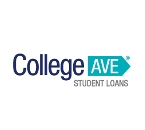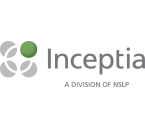Getting it Right: A Synthesized Perspective on Financial Aid Best Practices, 10:15 - 11:15 am
By Erin Powers, Communications Staff
Financial aid professionals are challenged to perform in accordance with “best practices” in the industry. In this Wednesday morning session, presenters discussed the three key factors that are fundamental to "getting it right" in the administration of the Title IV programs: the right people, the right service, and the right exposure.
"When you’re dealing with millions of dollars, I always used to tell my bosses ‘Other people can get it wrong, but if my office gets it wrong, it’s going to cost somebody some money,'" Pamela Fowler, executive director of financial aid at the University of Michigan and past NASFAA national chair, told session attendees. "Not everybody can say that, so it’s very important that we not only get it right, but we get it efficient and we get it effective," she said.
Making good hiring choices is key to getting the right people working in your office and it starts with making sure the position description is accurate and detailed. You’ll also want to make sure you’re choosing from the right hiring pool by getting the open position out to the right audience. You have to strike a balance, too, because you want an urgency in the hiring process so the position doesn’t remain vacant for too long, but “sometimes it can be to your detriment if you’re in too much of a hurry, so it’s better to take a little bit longer to hire, than to have to fire during that probationary period… It’s better to get that right person,” Sherwin Hibbets of Financial Aid Management for Education, Inc. cautioned.
“Nothing is more important in a team than getting someone who fits in the team,” but you also want to look for someone who fills any voids you may have, Fowler explained. Even if someone doesn’t have financial aid experience, are they customer service oriented? Do they show initiative? Finding someone with the ability to conduct qualitative and quantitative analysis is more important than ever before, particularly in schools with targets enrollment management plans, Fowler said.
Keeping up with what’s going on in the office is equally important. Conducting frequent reviews and focusing on having meaningful interactions with your staff will help you keep a read on whether you’ve got the right people. “Some of this aspect of getting the right people starts with getting to know who you have,” Hibbets said. "And that comes in through interaction," he added. Getting to know your staff as individuals can help you to know what motivates them, if they are intrinsically inclined or extrinsically inclined, what encourages them, what the problems in the office may be from their perspectives. It will help you to better assess whether staff are working well in their current jobs. "When you inherit an office, sometimes people are good people and they are in the wrong place… sometimes people are just in the wrong position," Fowler said. By getting to know your staff you can assess whether there's another office or job within your office that might be a better fit for them.
The final piece to getting the right people on your staff it to plan trainings and stress the importance of professional development—this will help the staff to know there are opportunities for learning and growth, while also getting your staff up to speed on what they need to know.
Once you’ve got the right people on your staff, you’ll want to focus on the right service and the right exposure, session presenters explained.
Other session takeaways:
To get the right service orientation/service ability, hone in on:
-
Customer Focus—get a firm grasp of your students’ perspectives through student-centered committees, student surveys, etc.
-
Technology—don’t stick with the status quo… know and explore your options. Don’t let technology limit you from providing excellent service to your students, if something isn’t working well, find a better system.
-
Reporting & Documentation—have a plan and process in place; select appropriate individuals for specific reporting tasks; know your audience for the data and let that help guide how you report it to make it helpful and user-friendly; make sure you are keeping up with reporting so you could pull data at the drop of a hat if needed to show how much student aid you disburse for how many students, broken down program by program. “You want to be seen on your campus as efficient and effective, and the way to do that is to be proactive” with reporting so you become known as a reliable source of up-to-date information for your director, your dean, other departments on campus, etc., Fowler said.
To get the right exposure:
-
Communication—Look at the method and the means with which you are communicating with your students. Are your efforts working well? If not, adjust them. Are communications accurate, current, and typo-free? Make sure communications that are going out are professional and clear.
-
Collaboration—”Many hands makes light work,” said Hibbets. Work with other offices and divisions on your campus to coordinate in areas of overlap. Work with student organizations and faculty on campus, community organizations, and state organizations on efforts that will help students as it pertains to financial aid.
-
Networking—stay in frequent contact with other departments and administrators, students leaders (they can be some of the best advocates), and professional organizations. “Don’t forget to network with the Department of Education,” Hibbets said. It’s important that they get to know who you are so you can forge a good working relationship—at some point you will need a documentable response to questions you ask, plus if you establish transparency, odds are your school may be less likely to be subjected to a program review because there will be less of a concern about the administration of your programs.
-
Making the News—You want to make sure that you’re being proactive and not reactive. When something good is happening on campus, make it known. Stay abreast of what’s going on. ”Make sure that you’re ready, and that hopefully everyone else on campus is ready, too,” Fowler said.
Publication Date: 6/28/2017












You must be logged in to comment on this page.